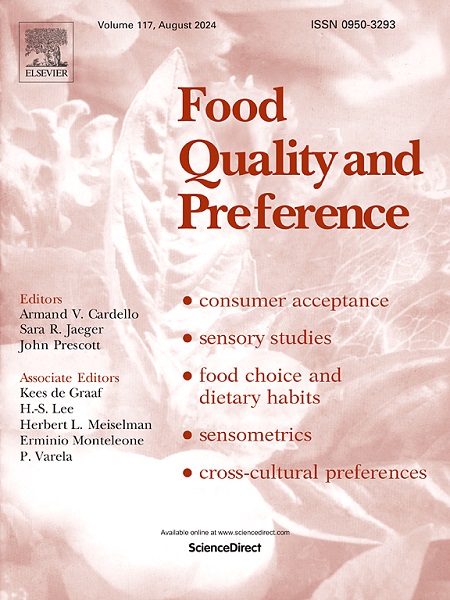可食用的创新:测试 3D 打印巧克力包装对 WOW 的影响
IF 4.9
1区 农林科学
Q1 FOOD SCIENCE & TECHNOLOGY
引用次数: 0
摘要
三维食品打印是一种新兴的加工技术,对食品工业和消费者体验都有着深远的影响。目前,它可以将各种食品材料加工成定制设计、可安全食用的 3D 打印食品。其中一个值得注意的应用是使用可安全食用的原料制作定制的、完全可食用的包装。本文介绍的研究考察了消费者在美食体验中对 3D 打印可食用包装的态度和情感,比较了使用全 3D 打印可食用巧克力包装和传统陶瓷包装的牛奶巧克力点心。结果表明,与陶瓷包装相比,可食用包装能引起更高水平的惊喜、迷恋和渴望,从而将消费者的总体积极体验提高 10%以上。这项工作的部分目的是让消费者熟悉这种创新型 3D 食品,展示其与食品行业的相关性和潜力。研究结果有助于了解消费者对 3D 打印食品的态度,并提出了一个新的潜在研究领域,为加强其在美食领域的普遍应用开辟了道路。本文章由计算机程序翻译,如有差异,请以英文原文为准。
Edible innovations: Testing the WOW impact of 3D printed chocolate packaging
3D food printing is an emerging processing technology with a profound impact on both the food industry and consumer experiences. It currently makes it possible to process a wide range of food materials into custom-designed and safe-to-consume 3D printed foods. One notable application lies in the creation of customized, fully edible packaging using ingredients that are safe for human consumption. The study presented in this paper examined consumer attitudes and emotions to 3D printed edible packaging in gastronomic experiences, comparing a milk chocolate snack served in a fully 3D printed edible chocolate packaging to one served in a traditional ceramic packaging. The results show that compared to the ceramic packaging, the edible packaging elicits higher levels of surprise, fascination, and desire, thereby increasing the overall positive consumer experience by more than 10 %. Part of this work aims to familiarize consumers with this innovative type of 3D food, demonstrating its relevance and potential to the food industry. The findings contribute to understanding consumer attitudes towards 3D printed foods and suggest a new potential field of research establishing a path to strengthen its common application in gastronomy.
求助全文
通过发布文献求助,成功后即可免费获取论文全文。
去求助
来源期刊

Food Quality and Preference
工程技术-食品科技
CiteScore
10.40
自引率
15.10%
发文量
263
审稿时长
38 days
期刊介绍:
Food Quality and Preference is a journal devoted to sensory, consumer and behavioural research in food and non-food products. It publishes original research, critical reviews, and short communications in sensory and consumer science, and sensometrics. In addition, the journal publishes special invited issues on important timely topics and from relevant conferences. These are aimed at bridging the gap between research and application, bringing together authors and readers in consumer and market research, sensory science, sensometrics and sensory evaluation, nutrition and food choice, as well as food research, product development and sensory quality assurance. Submissions to Food Quality and Preference are limited to papers that include some form of human measurement; papers that are limited to physical/chemical measures or the routine application of sensory, consumer or econometric analysis will not be considered unless they specifically make a novel scientific contribution in line with the journal''s coverage as outlined below.
 求助内容:
求助内容: 应助结果提醒方式:
应助结果提醒方式:


